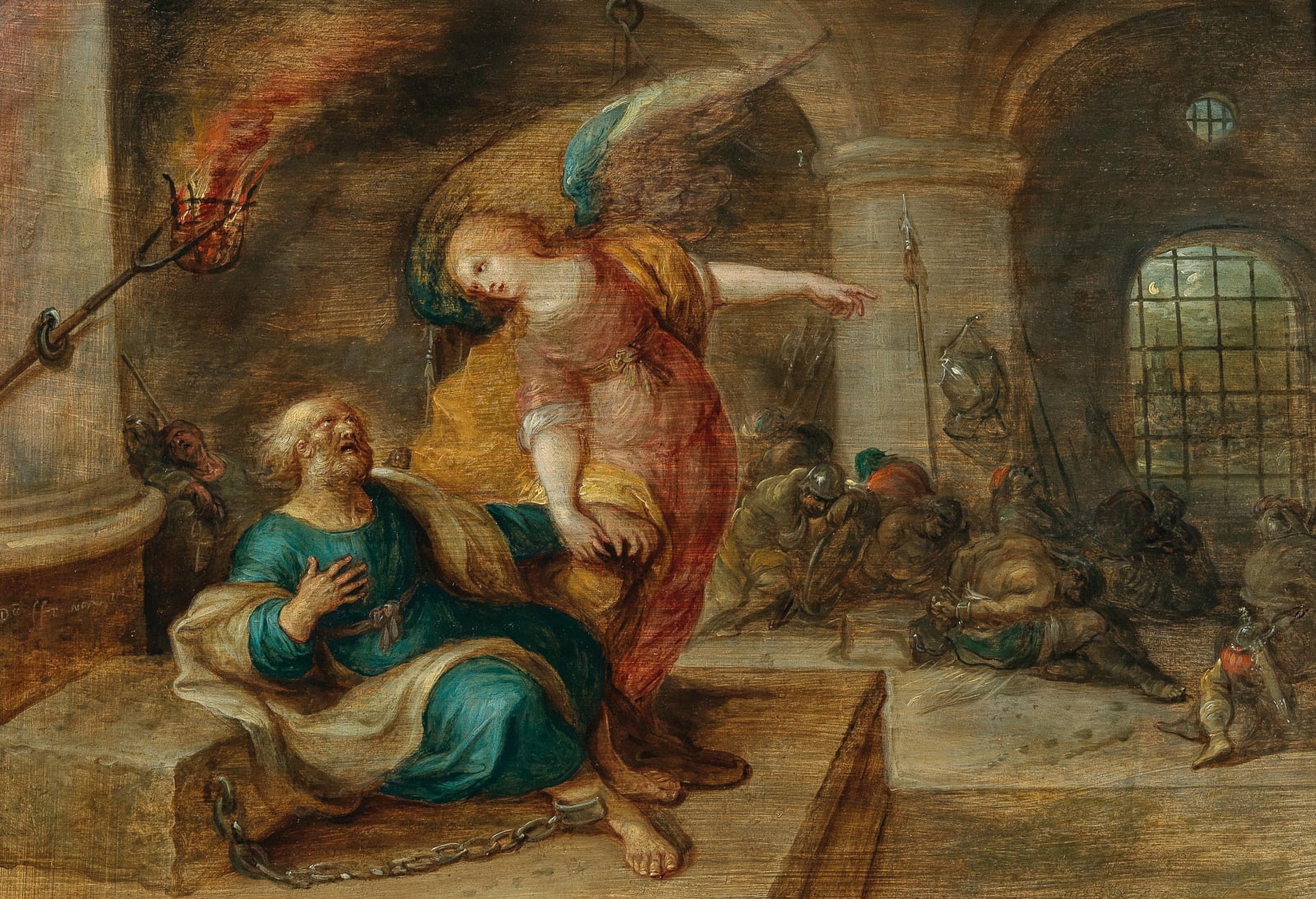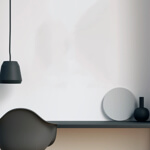Frans Francken the Younger (Antwerp 1581 - 1642)
First, allow your eye to be drawn to the window vista to the right: the moonlight piercing the clouds and shining down on the city. Note the loose, almost impressionist brush strokes the artist has used to depict the sleeping guards and prisoners lying on the floor, before feasting your eyes on the brightly coloured scene to the left. This is a brilliant, mature work by one of my favourite Flemish artists.
Frans II Francken was born in Antwerp in 1581. His father, Frans Francken the Elder, is considered the founding father of the Francken dynasty of artists, which produced about a dozen painters, including a female artist, Isabella Francken. Frans II, or “the Younger”, was arguably the most talented among them, and definitely the most famous. He undertook several trips to Italy, where he probably first met Rubens. He joined the guild of St Luke in 1605; in 1614, he became the dean of the guild. In 1607, Francken married Elisabeth Plaquet ‘with the special permission of the bishop’. This may have had something to do with the fact that their firstborn son, Frans III Francken (who also became a painter and was trained by his father), was born before the end of the year. Francken was a member of the Antwerp rhetoric chamber De Violieren, for which he painted – in collaboration with Hendrick van Balen, Jan I Brueghel and Sebastiaen Vrancx – a very fine coat of arms, which is still kept in the Royal Museum of Fine Arts in Antwerp today.
Francken was a versatile and prolific painter, producing not only – often small-scale – mythological, biblical, historical and allegorical paintings, mostly painted on copper or panel, but also large-scale altar pieces. He was also an innovator with regard to subject matter, being among the first in painting genre pieces with monkeys and so-called kunstkamer or gallery paintings, depicting artistic and natural treasures in a collector’s gallery. He is also known to have produced small panel paintings as decorations for cabinets, a piece of furniture for which the Antwerp workshops were well-known. As a result of his artistic talent, innovative iconography and business sense, Francken became hugely successful. Already in 1607 he was able to buy a large house in Antwerp where he lived and established his large workshop. As a highly skilled figure painter, Francken often collaborated with others, painting the figures in their landscapes (Joos de Momper, Abraham Govaerts), architectural compositions (Pieter Neeffs) and flower paintings (Jan Brueghel the Elder, Andries Daniels).
The present work is a beautiful example of Francken’s mature style, when his figures had become less mannerist and more baroque in nature and his brushwork was more loose and painterly. On stylistic grounds, it can be dated to the late 1620's or early 1630’s. This is also supported by the fact that the work is signed 'Do ffranck in f': ‘Do’ stands for ‘den oude’, or ‘the elder’, indicating that Frans III had already become active in the workshop, which he did in 1628.
The painting depicts the Deliverance of Saint Peter, an event described in the Act of the Apostles (chapter 12), in which the apostle Peter is rescued from prison by an angel. Although it was the subject of some artworks from the middle ages onwards, it was not a very common iconography. Nevertheless, it was depicted by such masters as Raphael and Murillo, perhaps because it offered an opportunity to paint a nightly scene. Francken, too, depicts a beautiful moonlit see-through on the right, next to the impressively painted heap of sleeping guards and prisoners, while the presence of the angel illuminates the foreground.
Provenance
Private collection, Brussels.
- X
- Tumblr
-
 Frans Francken the Younger (Antwerp 1581 - 1642)The Meeting of David & Abigailoil on panel41,5 x 58,5 cmsigned 'Do F. Fran...', lower right
Frans Francken the Younger (Antwerp 1581 - 1642)The Meeting of David & Abigailoil on panel41,5 x 58,5 cmsigned 'Do F. Fran...', lower right -
 Frans Francken the Younger (1581 - 1642)Death and the Miseroil on copper16,4 x 13 cm
Frans Francken the Younger (1581 - 1642)Death and the Miseroil on copper16,4 x 13 cm -
 Frans II Francken (Antwerp 1581 - 1642)The Last Judgmentoil on panel56 x 43,2 cm
Frans II Francken (Antwerp 1581 - 1642)The Last Judgmentoil on panel56 x 43,2 cm -
 Frans II Francken (Antwerp 1581–1642)Saint John the Baptist preaching in the Wildernessoil on panel28,2 x 36,5 cmsigned lower right 'Dj ffranck f.’
Frans II Francken (Antwerp 1581–1642)Saint John the Baptist preaching in the Wildernessoil on panel28,2 x 36,5 cmsigned lower right 'Dj ffranck f.’






